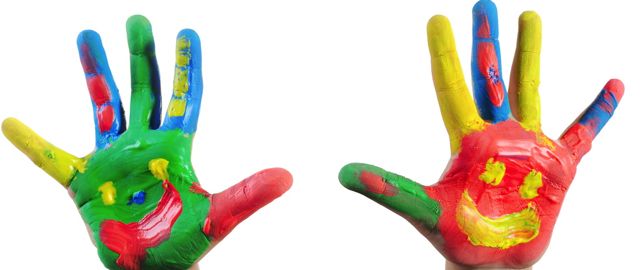Have you ever observed your child as she plays with paint and canvass? Don’t you just find their imagination amazing? They constantly create amazing art pieces that are impressive for their age. A child’s artistic work is the demonstration of their curiosity, inventiveness, self-confidence and openness to the world around them.
Parents are encouraged to nurture their kids’ talent in arts and crafts to help in the positive development of the child. And, the challenge is inspiring a genuine interest to learn art for self-expression. The key is to create an enjoyable atmosphere, get their attention through fun activities, and provide encouraging feedback; to inspire them their love for art.
Here are some observations I like to share on inspiring young kids to learn arts:
1. Art should never be forced upon your children, especially pre-schoolers, who do not have developed craftsmanship yet to express themselves artistically. Your goal is to ‘inspire’ your kids to express themselves through their own approach and preferences. Questions like “What do you should we do with it?” works best. Do not restrict them any specific mean of expressing themselves artistically and let them discover things their own approach instead.
2. When you have multiple kids, situating kids together creates an interactive and friendly environment between siblings. Creativity output varies with each child. So you should not tell your children that there is a correct way in drawing, painting or crafting an artwork. Encourage children to work independently and freely so that no two work product from your bunch will look the same. Most importantly, NEVER compare or grade children’s art work among the kids.
3. Selecting art materials is as important as teaching how to use them. Try to choose art tools and materials that are suitable for your children’s age. This should consider children’s age and motor skill where they can demonstrate better control. For example, different kind paint can be used in a variety of ways by kids in difference age. Making hand paintings, painting on canvass, hand painting children’s toys and many other interesting activities can be done.
4. In addition to providing your kids the right materials, you also need to provide time and space allow them to experience it freely. It is okay to teach them how to properly use the tools with proper form or gesture. And, how to properly handle and apply the materials. Kids should never worry about getting dirty or discouraged from making mistakes. Preparing old house clothes will be useful in your art teaching lessons.
Parents should be less controlling and reframe the urge of intervening your kid’s work creation. Any work product that a child creates should be valued and acknowledged to increase their confidence. Try hanging and displaying your children’s works on your bedroom or kitchen walls and see they’ll appreciate it too.
There are plenty of ways to inspire your children to be interested in art. It is up to the parents’ own creativity on how to engage them in painting and doing crafts together. Take note that art is a process and not about outputs. If you notice your child is gearing to become the next Picasso, then starting to teach your kids early will help to develop their talent and skills. As the great painter once said, “Every child is an artist. The problem is how to remain an artist once he grows up.” (Pablo Picasso)
